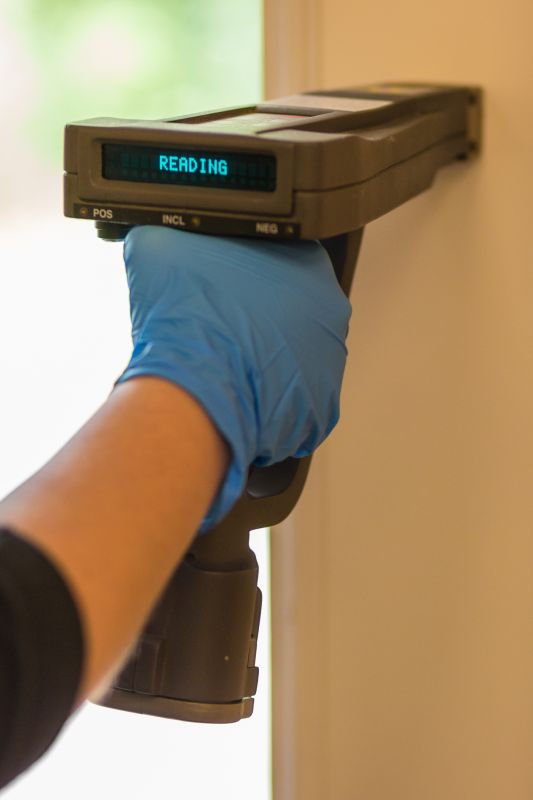Top-Rated Lead Paint Testing Equipment for Property Inspectors
Get insights into the most effective tools used by inspectors to identify lead hazards in residential and commercial properties.
 Lead paint testing products are essential tools for identifying the presence of lead-based paint in residential and commercial properties. These products are designed to provide quick and reliable results, helping homeowners, contractors, and inspectors determine if lead hazards exist. Testing for lead paint is a critical step before undertaking renovation, remodeling, or demolition projects, especially in older buildings where lead-based paint was commonly used. The variety of testing options available allows users to select the most suitable method based on accuracy, ease of use, and budget considerations.
Lead paint testing products are essential tools for identifying the presence of lead-based paint in residential and commercial properties. These products are designed to provide quick and reliable results, helping homeowners, contractors, and inspectors determine if lead hazards exist. Testing for lead paint is a critical step before undertaking renovation, remodeling, or demolition projects, especially in older buildings where lead-based paint was commonly used. The variety of testing options available allows users to select the most suitable method based on accuracy, ease of use, and budget considerations.
Top Overall Option
Multi-Method Lead Paint Test Kit
This versatile testing kit combines chemical reagent testing with a digital sensor for enhanced accuracy and ease of use. It provides clear visual results and is suitable for both DIY homeowners and professionals seeking reliable screening. Its comprehensive design allows for testing multiple surfaces quickly and safely, making it a popular choice for those prioritizing thoroughness and convenience.
Types of Products For Lead Paint Testings
Swab Test Kits
Simple wipe-based kits that change color upon contact with lead paint, ideal for quick screening.
Paint Chip Test Kits
Require collecting small paint samples to be tested with chemical reagents for lead detection.
Electronic Lead Test Devices
Use electronic sensors to detect lead presence without damaging surfaces, providing instant results.
Laboratory Testing Services
Send samples to certified labs for detailed analysis and precise lead concentration measurement.
X-Ray Fluorescence (XRF) Analyzers
Portable devices used by professionals to non-destructively assess lead content in paint and surfaces.
Surface Swab Kits
Designed for testing large surface areas with swabs that react with lead compounds.
DIY Lead Test Strips
Affordable strips that provide a quick yes/no answer for lead presence in paint or dust.
Laboratory Confirmatory Kits
Advanced kits that prepare samples for lab analysis, offering more detailed results.
Professional Lead Testing Instruments
High-precision devices used by licensed inspectors for comprehensive lead assessments.
Paint Lead Content Testers
Specialized tools designed to estimate the lead concentration in paint layers.
Surface Lead Detection Pens
Handheld pens that quickly identify lead on various surfaces through a chemical reaction.
Popular Choices
Widely used for quick, on-the-spot screening of painted surfaces for lead presence.
Commonly chosen for their affordability and straightforward sampling process.
Popular among professionals for their rapid, non-invasive testing capabilities.
A favorite for DIY projects, providing an easy and inexpensive way to test for lead.
Trusted by licensed inspectors for their accuracy and ability to test multiple surfaces quickly.
Selected by those needing definitive results and detailed analysis for compliance.
Preferred for large surface testing and quick initial screening.
Compact and user-friendly, suitable for quick spot checks on various surfaces.
Popular for their reliability and straightforward operation in home settings.
Favored by contractors and inspectors for on-the-go lead detection.
Most lead paint testing kits are formulated for ease of use, often requiring only a simple swab or wipe to collect a sample. Once the sample is obtained, the kit typically provides a color change indicator or a visual readout to suggest the presence or absence of lead. Some advanced testing methods utilize chemical reagents that produce a distinct color change, while others employ electronic or digital sensors for more precise detection. It is important to follow the manufacturer's instructions carefully to ensure accurate results.
While testing kits are valuable for initial screening, they are not substitutes for laboratory analysis if a definitive confirmation is needed. In cases where lead presence is suspected, further laboratory testing can provide detailed quantification. When selecting a product, consider factors such as sensitivity, ease of use, safety, and whether the kit is suitable for indoor or outdoor use. Proper testing can help prevent health risks associated with lead exposure, especially for children and pregnant women, by identifying contaminated surfaces that require remediation.
Overall, choosing the right lead paint testing product depends on individual needs and circumstances. Whether for a quick home inspection or a professional assessment, there are numerous options available to suit different levels of expertise and budget. Investing in a reliable testing kit can be a proactive step toward maintaining a safe environment and ensuring compliance with local health and safety regulations.
Key Buying Considerations
- Accuracy and sensitivity of the test kit to ensure reliable results.
- Ease of use, especially for non-professionals or DIY users.
- Safety features and instructions to prevent accidental exposure.
- Type of testing method—chemical, electronic, or laboratory-based.
- Surface compatibility, including whether it can test painted, dust, or other materials.
- Time required to obtain results, balancing speed with accuracy.
- Cost and value for money, considering the number of tests included.
- Portability and convenience for on-site testing scenarios.
- Certifications and compliance with safety standards.
- Availability of clear instructions and customer support.
- Ability to test multiple surfaces or large areas efficiently.
- Durability and shelf life of the testing products.
- Potential for false positives or negatives and how to interpret results.
- Compatibility with indoor and outdoor testing environments.
- Additional features such as digital readouts or confirmatory testing options.
